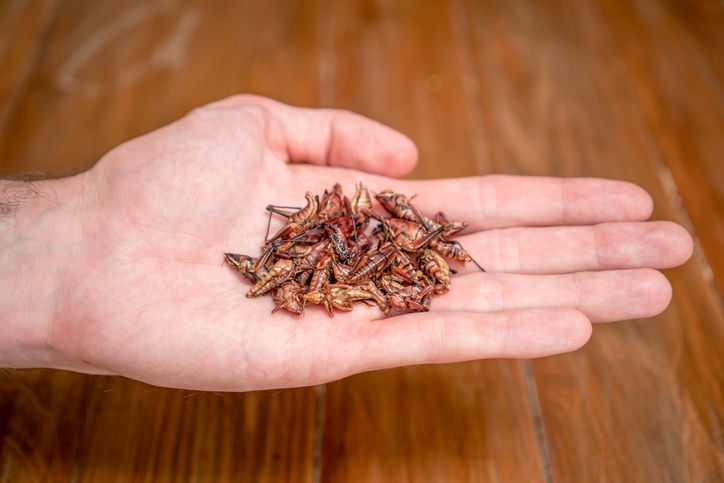
Yes, those are bugs on your menu.
Not crawling on your menu, no. They’re right there in print.
While insects are usually banned from restaurants, a few high-end eateries in D.C. now offer dishes featuring six-legged fare. Chapulines (a.k.a. grasshoppers) are on the menus at Poco Madre and at Jose Andres’ Oyamel Cocina Mexicana.
Poco Madre has also used worms found on agave plants.
And while it’s understandable to turn your nose up at this, know that it’s not all that unusual in other nations. One science journal estimates that 2 billion people in 113 countries regularly eat at least one of 2,000 species of bugs. That’s because they’re cheap, they’re plentiful, and … they’re good for you.
“Nutritionally, what’s really great about insects is that they’re high in protein, they provide healthy fats, and the best thing is that they have a much smaller impact on our environment,” said Sally Squires, who writes for the Lean Plate Club blog. “So they take less land, water and energy to really grow or create.”
That sustainability might be one reason why Europeans are coming around to the idea, according to a recent study. Wider acceptance stateside will require some legislative adjustments.
“A lot of the existing food laws don’t allow for insects to be in foods for obvious reasons,” she said. “So that’s going to be a challenge going forward, but in terms of being plentiful, being cheap, being able to sustain the world, I think we could see a lot more bugs on the menu.”
But how do they taste?
Per Squires, chapulines have a smoky flavor and are “a little bit like shrimp.” (While they’re served as street food and eaten like popcorn in Oaxaca, here in D.C., they get a classier treatment: sautéed in shallots and tequila, and put atop guacamole. They’re also served on tostadas.)
As for the worms, they yield “kind of an umami flavor,” similar to Parmesan cheese, seaweed or miso.
Still find the idea of eating them to be icky? Well, you’ve probably eaten some already — in the form of carmine, a red food coloring that is made from bugs.
“We’ve all been eating it for a very long time,” Squires said.








